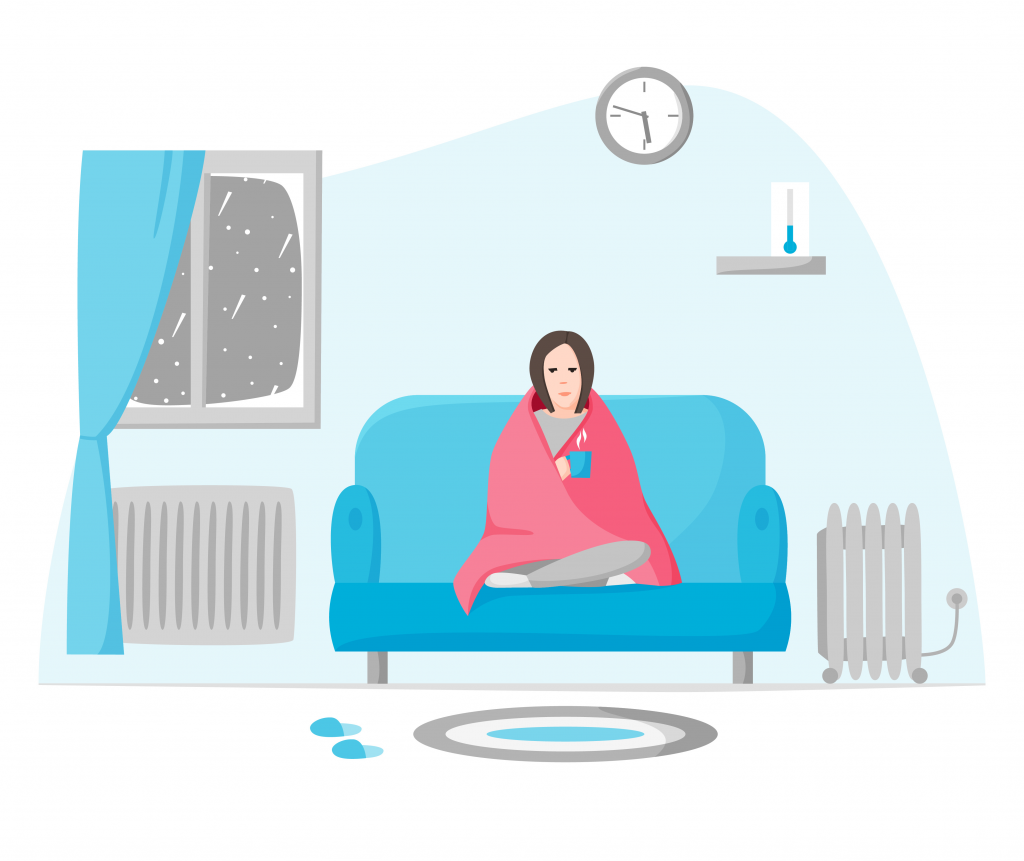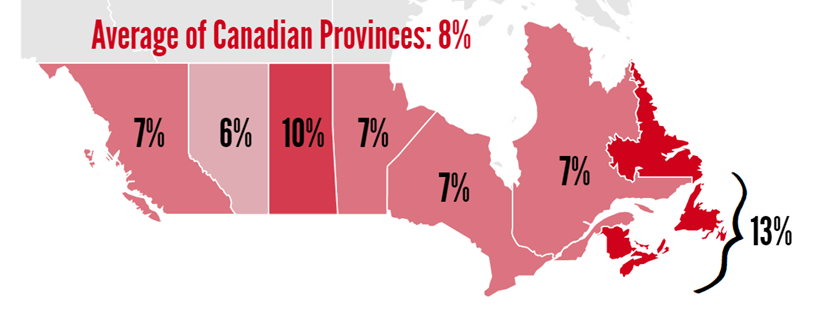What is energy poverty? Your questions answered.

Canada’s most populace province, Ontario, has the highest numbers of households struggling with energy poverty (1.1 M households).
Households that spend more than 6% of their after-tax household
income on home energy services (or roughly twice the national
median) have high home energy cost burdens, and are said to be
experiencing energy poverty.
WHAT IS ENERGY POVERTY?
Energy poverty refers to the experience of households or
communities that struggle to heat and cool their homes and power
their lights and appliances. Those in this situation face multiple
challenges and impacts, including:
– Discomfort from living in cold and drafty homes.
– Disruptions from abrupt utility shutoffs, such as inability to cook and
spoiled food.
– Sacrificing other essentials such as groceries and medication in order to keep up with energy bills.
– Increased incidence of respiratory illness in children and infants
– Higher stress and poor mental health outcomes for adults.
– Difficulty participating fully in community life.
https://energypoverty.ca : (Source: Energy Poverty in Canada: a CUSP Backgrounder, October 2019)
RISING ENERGY COSTS
The Low-Income Energy Network (LIEN) reports the following:
“Rising energy costs have an impact on all Ontarians, but low-income
households are hit hardest. Low-income households often pay a very high
percentage of their income on energy costs. LIEN believes that low-income
consumers should not be paying more than 6% of their total household
income on energy.
LIEN uses the term “energy poverty” to describe this disproportionate
burden of electricity, natural gas and other utility costs on low-income
households which reduce the funds available for food, clothing, medicine and other basic necessities. Inability to pay utilities can lead to
homelessness.
Energy poverty affects low-income people living in all categories of
housing: private rental, social housing and owner-occupied. While energy poverty can often be the result of lack of income, it can also be the result of the quality of housing. For example, if a home lacks insulation or draft-proofing, has inefficient heating equipment or has other inefficient appliances, energy costs will remain high despite the resident’s best efforts to be responsible and conserve.
High energy costs and low incomes are a painful combination. In the cold winter months, when energy bills can sometimes be greater than rent, poor families have to choose between food, clothing, and keeping themselves warm. They may be forced to live in moderate to extreme discomfort. Health can be affected.
Higher summer temperatures, prolonged heat waves and more episodes of extreme heat can combine to deadly effect. In order to adequately heat our homes, prepare food and live in safe conditions, we need energy. According to the Canadian Housing and Renewal Association (CHRA), housing is a vital platform for individual health and well-being.
“Housing in disrepair leads to higher risks of injury and accidental death in the home and unhealthy, indeed sometimes fatal, exposure to extremes of heat and cold. Exposure to dampness, moulds, fungus
(e.g. from poor insulation … poor heating and ventilation systems) can cause a wide range of pathologies, including asthma and other respiratory diseases.” 1
1 Home Truths: Why the Housing System Matters to All Canadians,
Andrew Jackson, CHRA, 2004, p.37-38.
2 https://www.lowincomeenergy.ca/assets/sitedocs/2013/02/LIEN-
energy-poverty-manual_Jan-2013.pdfreports…
Although these health risks apply to all people, seniors, children and those who are disabled or have a long-term illness are especially vulnerable. However, we still do not have a comprehensive, environmentally sustainable strategy in place to reduce energy poverty. We must also step up to our responsibility to reduce emissions as climate change is a serious threat requiring serious attention. Reducing our energy consumption is a critical component of any climate change strategy.
Low-income Ontarians want to be able to conserve energy where possible. However, low-income people do not have the money available to invest in energy conservation and efficiency. As such, measures are required to ensure low-income people are able to gain access to effective conservation programs. Additionally, often low-income families live in private rental or social housing. This means that they cannot directly address their quality of housing and the effect this has on their conservation efforts, and efforts must be targeted to landlords to improve the energy efficiency of their buildings. 2
Household Fuel Poverty Rates in Canadian provinces in 2015:

Household income levels are a primary determinant of fuel poverty.
Lower income households are generally the most affected and usually
spend a larger percentage of their income on utilities. Additionally,
higher income households can more easily invest in improving their
home’s energy efficiency, and residential electricity and natural gas
intensity Footnote2 tends to decrease in higher income households. To
address fuel poverty, provincial and federal governments have
introduced energy efficiency rebates targeted at both rental owners
and low income households.

Are you a resident of Bruce or Grey County and are looking to reduce your high energy costs? We can help!
Our Energy Assistance Pilot Project can help determine if you qualify for energy saving upgrades and programs.
To learn more, visit https://unitedwayofbrucegrey.com/…/energy-assistance
Or contact Kim Williams, Outreach Coordinator for the United Way Energy Assistance Pilot Project at 1-800-794-1728 or aft@unitedwaybg.com

